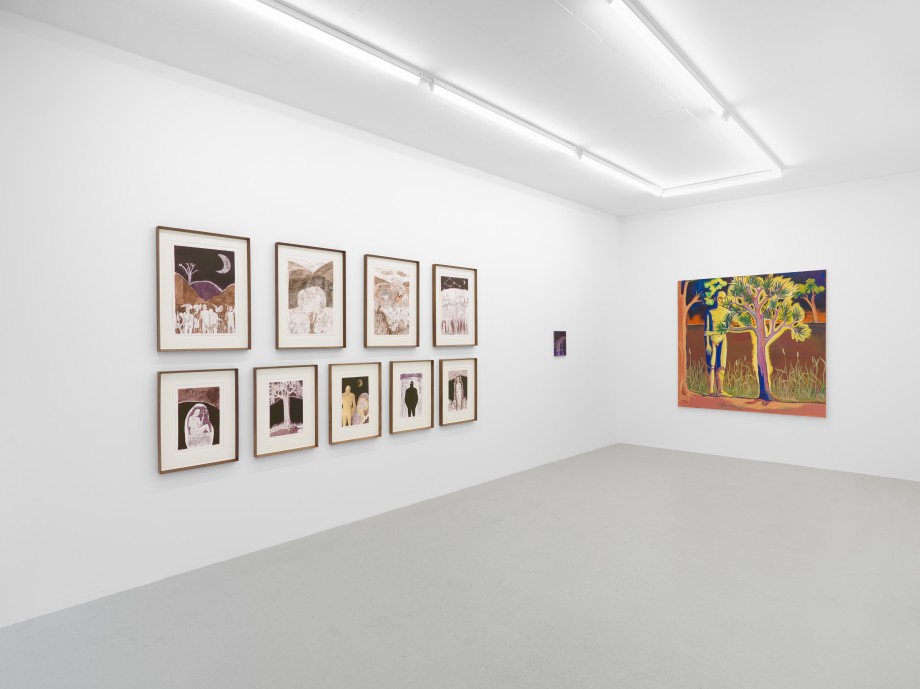The drama, pleasure, and impossibility of arcadia is ubiquitous in art history. A quest for utopianism is always somewhat tethered to the ability to imagine and represent a multitude of worlds. Kemi Onabulé experiments with arcadia as an aesthetic and political concept - testing its limits and pertinence to contemporary art.
Our moment is one of climate catastrophe. Onabulé is attuned to rising temperatures and how that "affects our idea of place in the world." The largest scale work in the exhibition, Burning Man, Burning Tree (2022), represents a paradise set afire, in which human and tree are both engulfed in flames. This fiery presence abstracts the setting while illuminating the two figures - human and tree, side by side. In unsettling the romanticism of the natural environment as pristine, Onabulé experiments with the idea of nature as untouched. The bucolic vision of arcadia is destabilized by the ecological realities of the planet we call home.
Onabulé's figures appear to be anonymous, raceless, and genderless, and she depicts the humans as being surreal and unbounded. I read this ambiguity as paradigmatic of the universal applicability of climate disaster. Everyone is affected by environmental distress, although the extent to which someone is implicated is determined by race and socioeconomic status.
While the Greek notion of arcadia and its rich artistic legacy is paramount to this recent body of Onabulé's work, I am also reminded of Uche Okeke's concept of "Natural Synthesis," in which indigenous aesthetic practices are merged with Western perspectives. Although the framework has distinct origins in Nigerian modernism, it parallels the possibilities of ambivalence and blended styles at play in Onabulé's work. Perhaps it seems starry-eyed to describe the fusion of Onabulé's Greek and Nigerian heritage as akin to Okeke's Natural Synthesis, but as Yinka Shonibare once exclaimed about being an artist: "you've got to be a bit utopian…"
As such, one can bask in the bold colours and dynamic scenes of Onabulé's works while reckoning with the dark undertones of ecological disaster. Pleasure and pain - like the human figure and the tall tree - are intimately tethered to one another in complex ways, although they bear different fruits. Apropos to our moment, in which cycles of joy and fear are inevitable, both Onabulé's subversions and propagations of utopia are germane.
- Alexandra M. Thomas, August 2022

